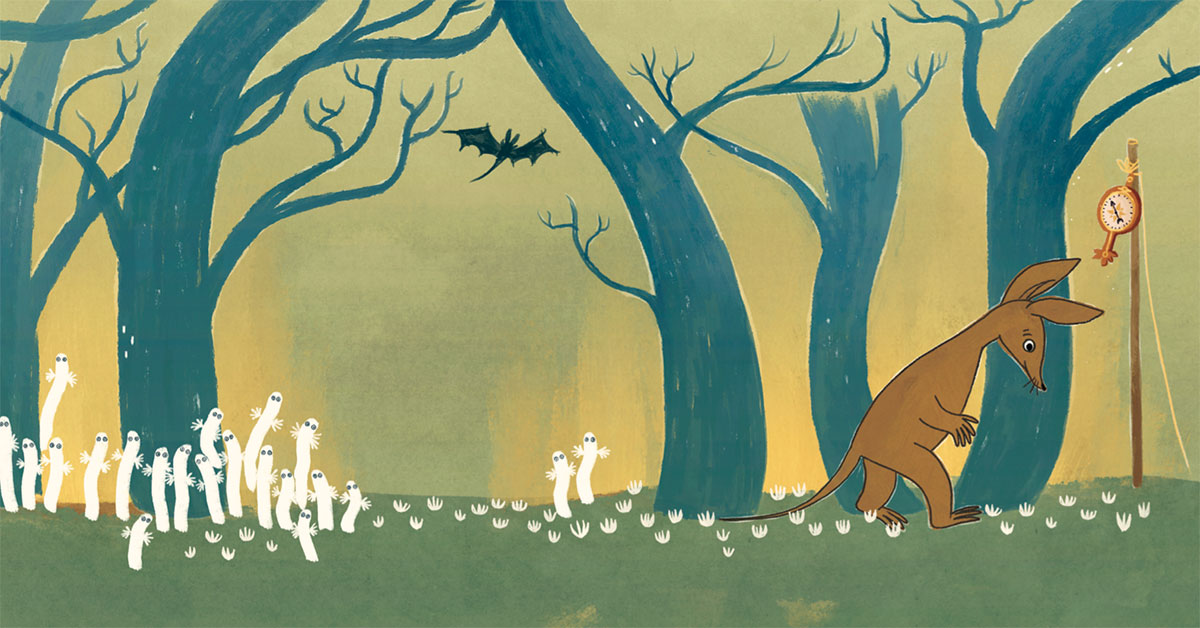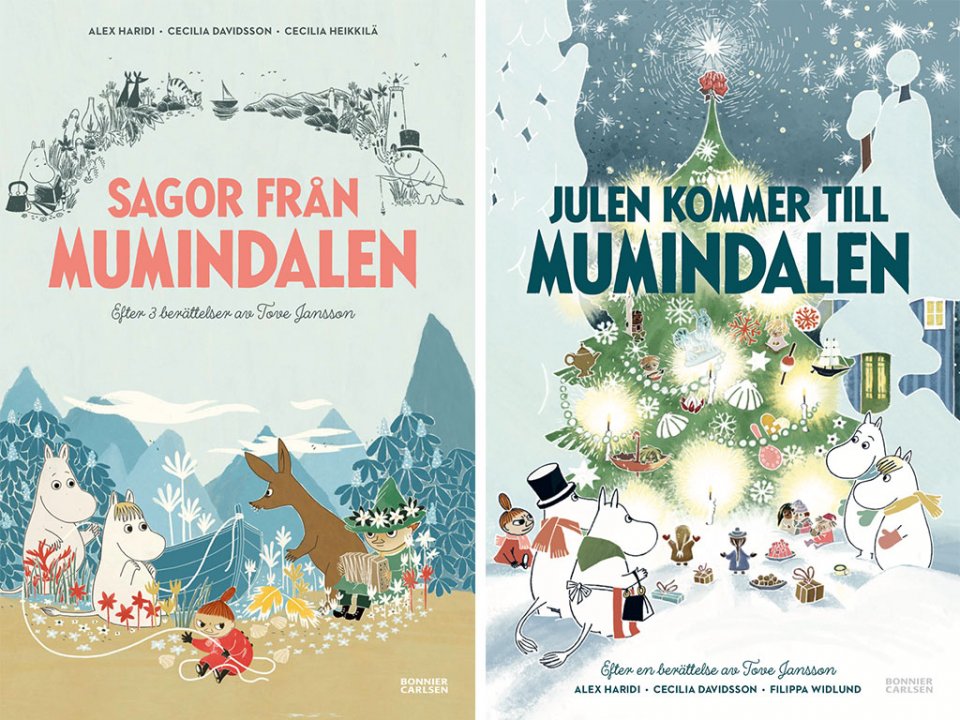How does one go about adapting books that are as well-known and loved as Tove Jansson’s Moomin-stories? We talked to two of the creators behind a new range of Moomin-stories adapted for younger readers, Alexi Haridi and Cecilia Heikkilä – watch our video and read a longer interview below!
The books Stories from Moominvalley and Christmas Comes to Moominvalley are targeted at readers from 3 years and up. They have been adapted to the picture book format from Tove Jansson’s original books The Moomins and the Great Flood, Finn Family Moomintroll and Jansson’s short story The Fir Tree.

“The story book consists of three stories. The first describes how Moomintroll and his parents find their way to Moominvalley. For the second story, I wanted to stay in Moominvalley and explore it. The child steps into the world and meets the important characters and in the last story we open up the world, when they go on a little adventure”, says writer Alex Haridi.
Striking that magical balance between light and darkness
The team wanted to do Tove’s work justice. What elements were most important to preserve?
“Since I was a child I’ve always thought that there was a magical touch in Tove Jansson’s stories. A balance between darkness and light. There was room for big feelings and danger without ever losing the intelligence and acuity which is present both in her images and her storytelling. Preserving that has been important for me”, says illustrator Cecilia Heikkilä.
“The most important thing for us has been to retain the philosophical elements that are present in the books. Adapting them for a younger audience doesn’t mean making them less smart”, says Alex Haridi.
Sprinkling Tove-love over the pages

How does one dare to make new interpretations of works that so many readers have a strong relationship to?
“I respect Tove Jansson very much, so quite a lot of time in the beginning was spent just doubting everything”, says Alex Haridi.
“The biggest challenge for me was preserving this important heritage. Everyone who knows Tove Jansson has an idea about what Moominvalley is. So I’ve treaded with very soft paws in this work process and tried to treat the images with as much respect as possible. I’ve almost had to shut out the fact that the books will be published, otherwise it would have been too scary. I’ve sat by my drawing table and sprinkled my love for Tove over the images”, says Cecilia Heikkilä.
The team wanted to do Tove’s work justice. What elements were most important to preserve?
“Since I was a child I’ve always thought that there was a magical touch in Tove Jansson’s stories. A balance between darkness and light. There was room for big feelings and danger without ever losing the intelligence and acuity which is present both in her images and her storytelling. Preserving that has been important for me”, says illustrator Cecilia Heikkilä.
“The most important thing for us has been to retain the philosophical elements that are present in the books. Adapting them for a younger audience doesn’t mean making them less smart”, says Alex Haridi.
The illustrator who ate Moomin books
Both Alex Haridi and Cecilia Heikkilä have ties to Tove Jansson’s homeland Finland.
“I’m from a bilingual family – my mum is Finnish. My parents used to choose books for reading aloud that were available in both Swedish and Finnish. It was practical, because that way they could take turns reading bedtime stories. Mum used to read in Finnish, and when she grew tired, dad continued with the same book, but in Swedish. So for me the world of the Moomins has always existed”, says Haridi.
“Before I could read the books myself, I used to chew on them. So I’m sure I’ve swallowed a few pages from her picture books. And I’ve spent many summers in the archipelago in Turku on the island of my relatives. I recognise a lot of the flora and fauna in Tove’s work from my childhood”, says Heikkilä.
In addition to Heikkilä and Haridi, the team behind the new range Moomin books consists of writer Cecilia Davidsson and illustrator Filippa Widlund, who has illustrated the Christmas book. Several new stories are under way. The books are published in Swedish by Bonnier Carlsen, in English by MacMillan, in Finnish by Tammi, in Danish by Carlsen, in French by Cambourakis and in Russian by Rech Publishing.

